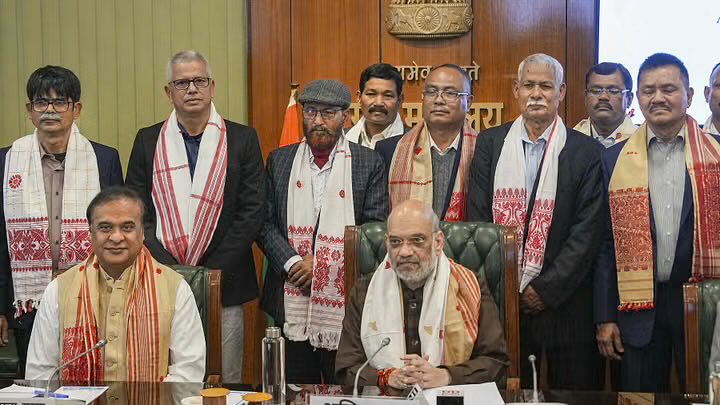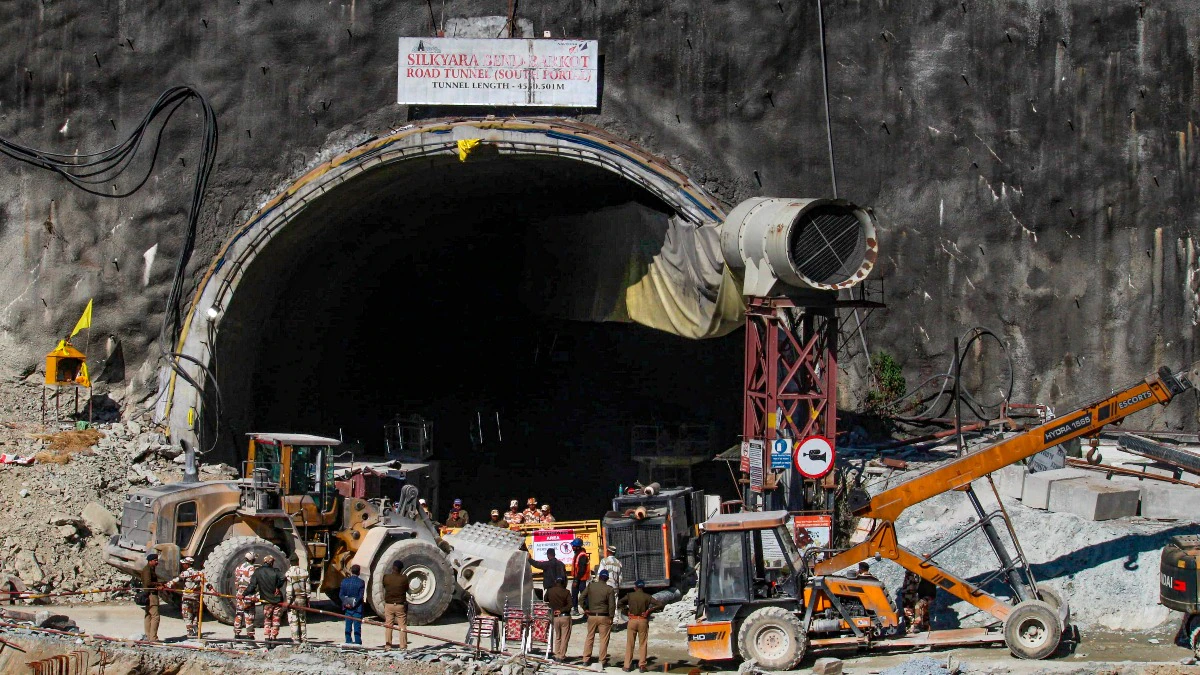In a groundbreaking development, the pro-talks faction of the United Liberation Front of Asom (ULFA), the Centre, and the Assam government signed a tripartite peace agreement on Friday. The accord, described by Union home minister Amit Shah as a watershed moment, is poised to bring an end to decades of violence in Assam, marking the beginning of a new era of prosperity for the region.
Key Points of the Peace Agreement:
- ULFA Pro-Talks Faction’s Commitments:
- Shunning violence and disbanding the organization.
- Integration into the democratic process.
- Surrendering arms and vacating designated camps.
- Government’s Commitments:
- Development initiatives, including an Indian Institute of Management (IIM), new railway lines, and national highways amounting to around ₹1.5 lakh crore.
- Restrictions on land procurement within a 5km radius of iconic structures in the state.
- Historic Day for Assam:
- Union home minister Amit Shah declared the agreement as a new era of peace for Assam and the entire northeast.
- ULFA cadres are expected to join the mainstream, contributing to a significant reduction in violence in the region.
- Exclusion of ULFA Hardline Faction:
- The peace agreement did not include the hardline Paresh Baruah faction of ULFA.
- The pro-talks faction, led by Arabinda Rajkhowa, accounted for 726 members compared to around 200 members in the hardline faction.
- Positive Impacts and Development Packages:
- Shah highlighted the positive impact of Prime Minister Narendra Modi’s policy in bringing Delhi and the North-East together.
- A comprehensive package for the development of Assam announced, emphasizing time-bound implementation.
- Previous Background and Efforts:
- ULFA-sponsored attacks began in 1979, and the group continued to operate despite a landmark accord in 1985.
- In 2011, ULFA split into pro-talks and anti-talks factions. The pro-talks faction engaged in negotiations with the government.
- Talks resumed in April 2023, culminating in the historic signing of the peace agreement.
- Reactions and Future Outlook:
- Scepticism expressed by some about the deal’s relevance, as the ULFA hardline faction remains active.
- The absence of details raised questions, with some viewing it as a political strategy ahead of the 2024 Lok Sabha polls.
The peace agreement signifies a significant step towards stability and development in Assam, underlining the collaborative efforts between the ULFA pro-talks faction, the government, and the Centre. As Assam moves towards a more peaceful future, attention now turns to the effective implementation of the accord and its lasting impact on the region.
Title: “Historic Peace Agreement Signed in Assam: ULFA Pro-Talks Faction, Centre, and State Government Unite for Prosperity”
In a groundbreaking development, the pro-talks faction of the United Liberation Front of Asom (ULFA), the Centre, and the Assam government signed a tripartite peace agreement on Friday. The accord, described by Union home minister Amit Shah as a watershed moment, is poised to bring an end to decades of violence in Assam, marking the beginning of a new era of prosperity for the region.
Key Points of the Peace Agreement:
- ULFA Pro-Talks Faction’s Commitments:
- Shunning violence and disbanding the organization.
- Integration into the democratic process.
- Surrendering arms and vacating designated camps.
- Government’s Commitments:
- Development initiatives, including an Indian Institute of Management (IIM), new railway lines, and national highways amounting to around ₹1.5 lakh crore.
- Restrictions on land procurement within a 5km radius of iconic structures in the state.
- Historic Day for Assam:
- Union home minister Amit Shah declared the agreement as a new era of peace for Assam and the entire northeast.
- ULFA cadres are expected to join the mainstream, contributing to a significant reduction in violence in the region.
- Exclusion of ULFA Hardline Faction:
- The peace agreement did not include the hardline Paresh Baruah faction of ULFA.
- The pro-talks faction, led by Arabinda Rajkhowa, accounted for 726 members compared to around 200 members in the hardline faction.
- Positive Impacts and Development Packages:
- Shah highlighted the positive impact of Prime Minister Narendra Modi’s policy in bringing Delhi and the North-East together.
- A comprehensive package for the development of Assam announced, emphasizing time-bound implementation.
- Previous Background and Efforts:
- ULFA-sponsored attacks began in 1979, and the group continued to operate despite a landmark accord in 1985.
- In 2011, ULFA split into pro-talks and anti-talks factions. The pro-talks faction engaged in negotiations with the government.
- Talks resumed in April 2023, culminating in the historic signing of the peace agreement.
- Reactions and Future Outlook:
- Scepticism expressed by some about the deal’s relevance, as the ULFA hardline faction remains active.
- The absence of details raised questions, with some viewing it as a political strategy ahead of the 2024 Lok Sabha polls.
The peace agreement signifies a significant step towards stability and development in Assam, underlining the collaborative efforts between the ULFA pro-talks faction, the government, and the Centre. As Assam moves towards a more peaceful future, attention now turns to the effective implementation of the accord and its lasting impact on the region.
Discover more from The Doon Mozaic
Subscribe to get the latest posts sent to your email.



